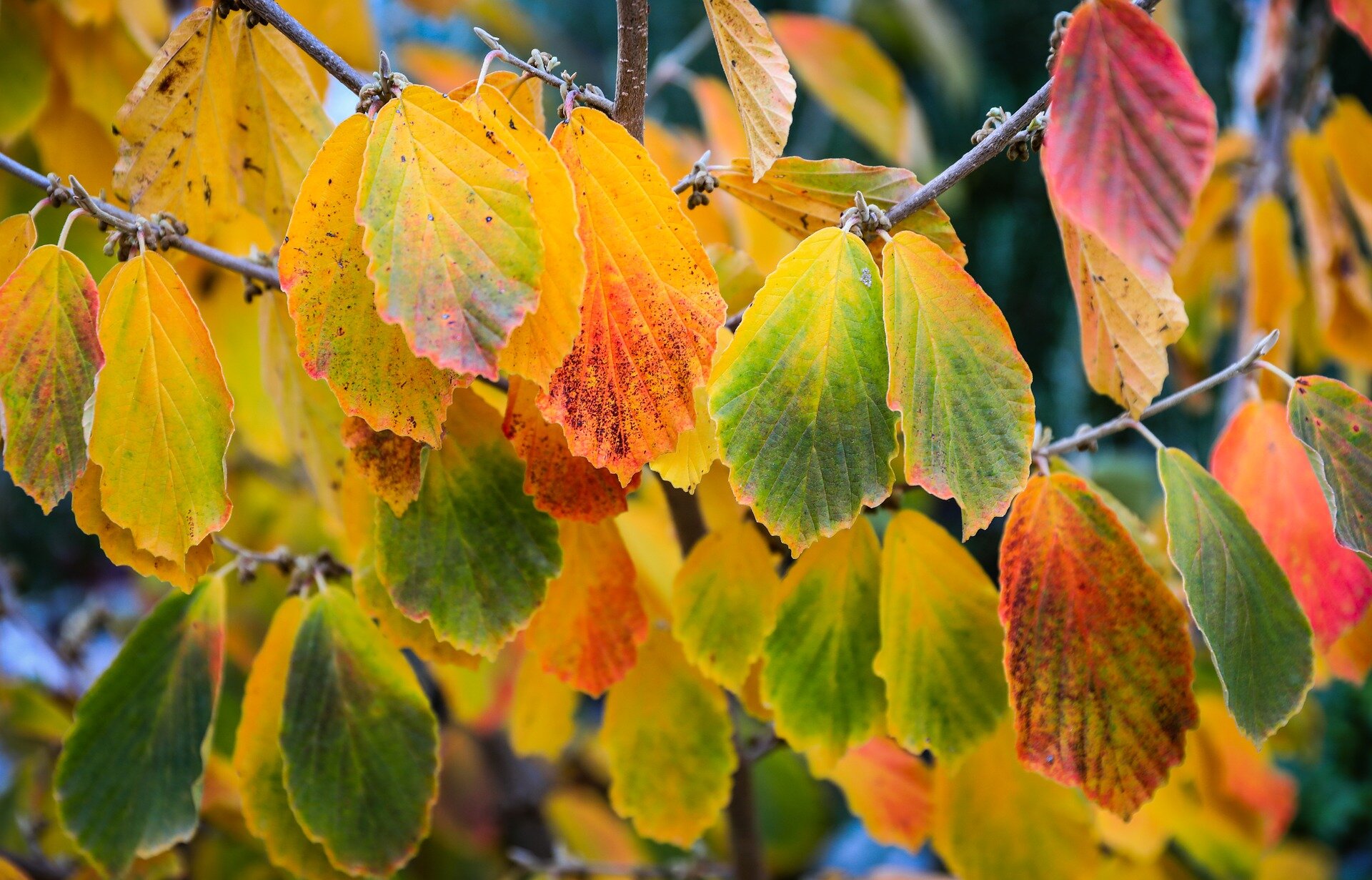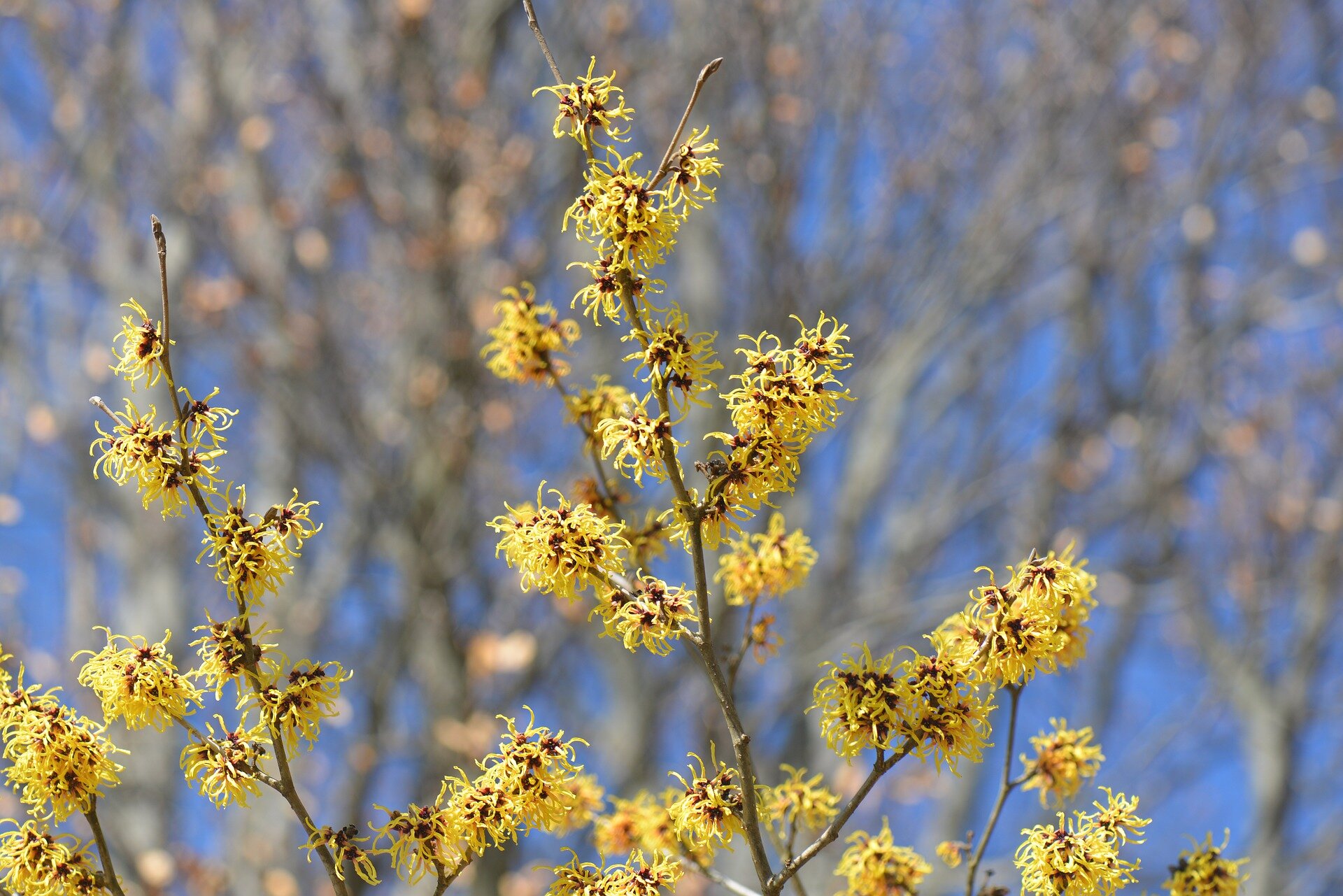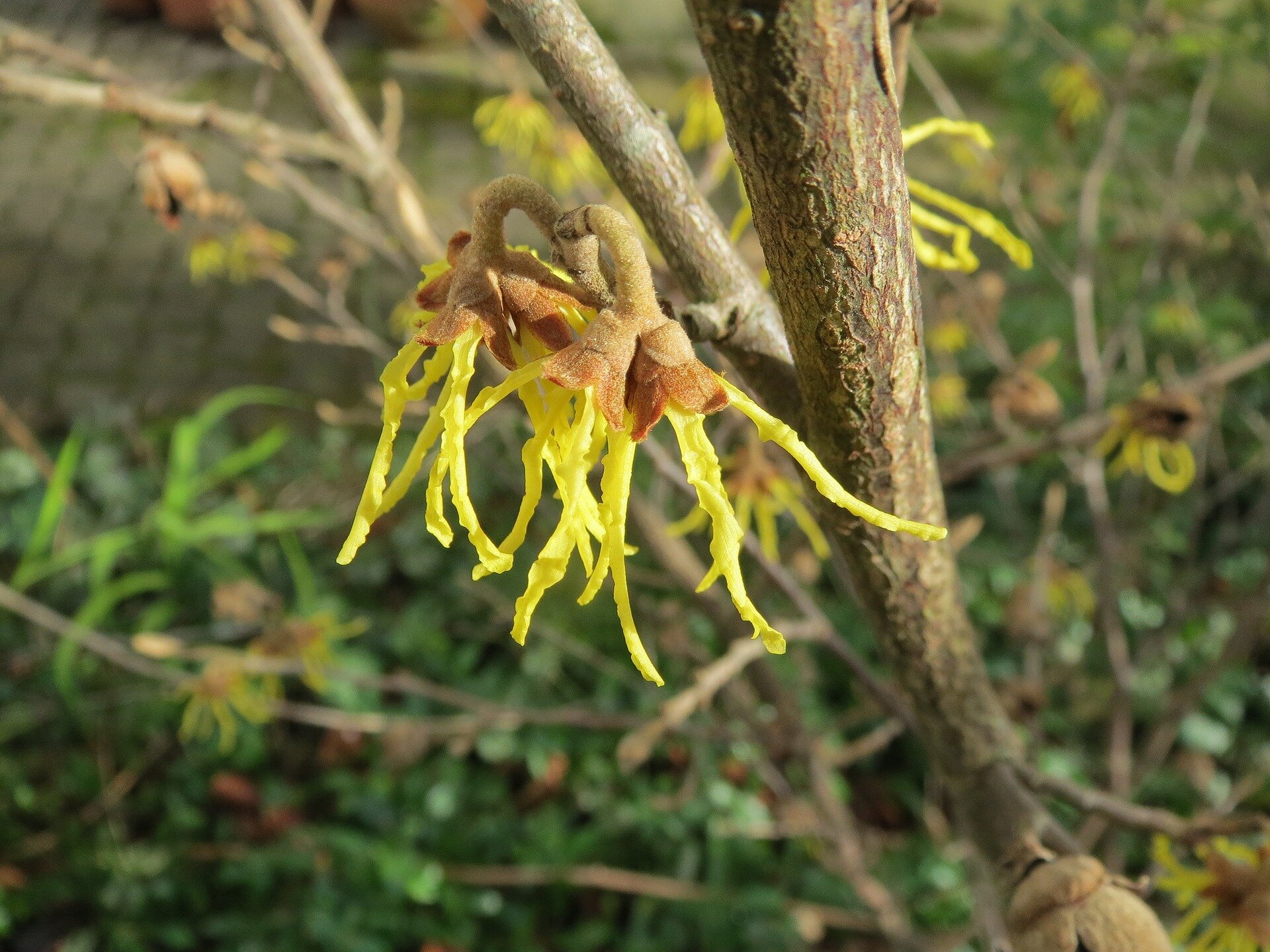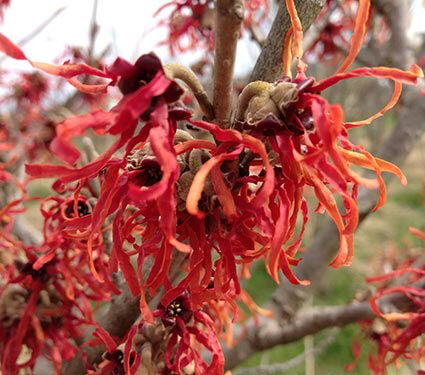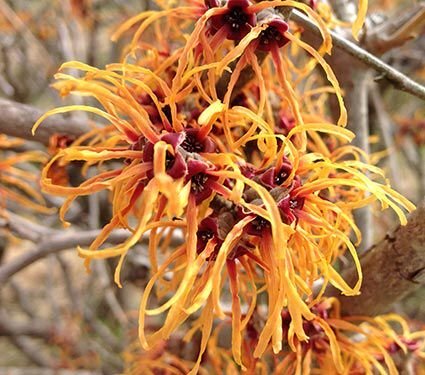witch hazels for winter interest
photo by Nennieinszweidrei
Just when all the color has faded from the landscape and it seems as if everything has shifted to varying shades of brown and gray the blooms of the witch hazel arrive to brighten the winter garden. Witch hazels are a genus of flowering shrubs in the family Hamamelidaceae, with four North American species (H. mexicana, H. ovalis, H. virginiana, H. vernalis), one Japanese (H. japonica) and one Chinese (H. mollis). Hamamelis virginiana is the species that is native to our area (the eastern United States), and can be found as an understory tree in wooded areas.
Witch hazels are unique in that the flowers, fruits and next year’s leaf buds are all present on the plant at the same time. The flowers, which can tolerate sub-freezing temperatures, resemble delicate sprays of crinkled confetti strands in bold yellows, oranges and reds. In addition to their colorful display, the flowers are also highly fragrant with a bold citrusy scent. The leaves - oval with irregular margins - turn yellow/orange in the fall, and the fruits are small dry capsules that can shoot seeds up to 30 feet away when they split open. These seeds are eaten by a number of species of birds and the plant as a whole serves as a host for larvae of the spring azure butterfly.
name origination
Witch hazel is sometimes spelled with a hyphen, witch-hazel, to indicated that it is not a true hazel. The genus name, Hamamelis, comes from the Greek words hama meaning ‘at the same time’ and melon meaning ‘fruit,’ which refers to the fact that the flowers occur simultaneously with the fruits from the previous year. The name witch has it’s origins in the Middle English word wiche which means ‘bendable.’ Early settlers observed Native Americans using the forked branches as dowsing rods to find sources of water due to their pliant nature. That fact, coupled with the similarity of the leaves of the witch hazel to the leaves of the true hazels makes the name understandable despite it’s misappropriation.
above from left: young witch hazel fruits, dried open fruits and leaves, fall foliage colors. photos: Katja Schulz, Getty Images, Jesienne Gwiazdy
habit
Witch hazels are deciduous shrubs/small trees which grow in zones 3-8. They flower best in full to partial sun (at least 4 hours direct light) in moist, well-drained soil. At maturity they can reach 10-25 feet tall. The best time to plant a new witch hazel is early spring or late fall. Pruning is best done after flowering is completed so the tender buds will not be damaged. Good news for Cape Cod gardens is that witch hazels are very pest and disease resistant and can even cope with some light deer browsing.
astringent
The leaves and bark of the witch hazel can be used to produce the astringent of the same name. Widely used by Native Americans for medicinal purposes, Thomas Newton Dickinson of Essex, Connecticut introduced the first commercially available version in 1866.
above from left: witch hazels in full bloom, a close-up of Hamamelis virginiana blossoms. photos: Getty Images, Unsplash, Wikimedia Images
species and cultivars
There are several cultivars of our native or Common Witch Hazel (Hamamelis virginiana) species, which bloom between October and December. Popular varieties include ‘Harvest Moon’ which is taller at 10-15 feet and features lemony-yellow flowers that open after leaf-drop for a more dramatic show; and ‘Little Suzie’ which is a more compact variety, topping out at 4-5 feet with soft yellow flowers.
Ozark Witch Hazels (Hamamelis vernalis), or vernal or spring-blooming witch hazels, are native to the Ozark Mountain area and feature smaller but more intensely fragrant blooms which open from January through April and curl up during colder temperatures. Cultivars of note include ‘Autumn Embers’, ‘Lombart’s Weeping’, ‘Sandra’ and purple varieties like ‘Amethyst’ and ‘Purple Prince’.
Mexican Witch Hazels (Hamamelis mexicana) are native to Northern Mexico. Blooming in October, they have light to strong yellow flowers and dark green, textured foliage.
Big-Leaf Witch Hazels (Hamamelis ovalis) are a recently discovered species of witch hazel that resides in just one county in Mississippi. As the name implies, the leaves of this species are two to three times as large as our native species and the flowers, which open from December through February, are red instead of yellow.
Chinese Witch Hazels (Hamamelis mollis) flower from January through March and are considered the most fragrant species of witch hazel. Notable cultivars include ‘Goldcrest’, ‘Wisley Supreme’, and ‘Crimson Gold’.
Japanese Witch Hazels (Hamamelis japonica) are more delicate and cannot tolerate the colder temperatures found in our area. In Japan the flowers are used in tea ceremonies. Cultivars include an unusual weeping variety named ‘Pendula’ which has a much more compact form than it’s native version.
Hybrid Witch Hazels (Hamamelis x intermedia) are a cross between the Chinese and Japanese species of witch hazel and are the ones you will most likely find at your local garden center. The popular ‘Arnold Promise’ is a hybrid, as is the rich red ‘Diane’, the orange ‘Jelena’, and the light yellow ‘Pallida’.
above from left: Witch hazel hybrids ‘Diane’, ‘Jelena’, and the Ozark witch hazel ‘Amethyst’. Photos: White Flower Farm
If you would like a chance to see dozens and dozens of witch hazel cultivars blooming simultaneously then be sure to take a trip to the Chicago Botanic Garden’s Bernice E. Lavin Plant Evaluation Garden. It’s the second year of their six-year witch hazel trial, where they are growing out 36 different cultivars of the four major Hamamelis species. In February the trial beds burst into bloom, a sight every witch hazel aficionado should not miss! For more information visit: https://www.chicagobotanic.org/plantinfo/smart_gardener/which_witch_hazel_should_be_your_yard




